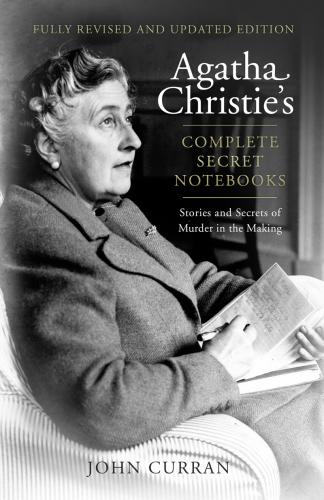Although mutually advantageous, the relationship between Christie and her publisher was by no means free of controversy. The proposed jacket design for The Labours of Hercules horrified her (‘Poirot going naked to the bath’), she considered that an announcement in ‘Crime Club News’ about 1939’s Ten Little Niggers – its title later amended to the more acceptable And Then There Were None – revealed too much of the plot and in September 1967 she sent Sir William (‘Billy’) Collins a blistering letter for having received her so-called ‘advance copies’ of Endless Night only after she saw them herself on sale at the airport. And as late as 1968 she wrote her own blurb for By the Pricking of my Thumbs.
Thanks to her phenomenal sales and prodigious output, she became a personal friend of Sir William and his wife, Pierre, and conducted much of her correspondence through the years directly with him. They were regular visitors to Greenway, her Devon retreat, and Sir William was one of those who spoke at her memorial service in May 1976. A measure of the respect in which he held her can be gauged from his closing remarks, when he said that ‘the world is better because she lived in it’.
Crime Writers in the Notebooks
‘Do you like detective stories? I do. I read them all and I’ve got autographs from Dorothy Sayers and Agatha Christie and Dickson Carr and H. C. Bailey.’
The Body in the Library, Chapter 6
Dotted through Christie’s Notebooks are references to other crime novels and their writers. Many of these are fellow-writers, and their work known to her through her membership of the Detection Club. Proof that she was widely-read in her chosen genre is evident from passing references to the work of other writers not personally known to her. And, finally and intriguingly, there are references to her own work.
The Detection Club in the Notebooks
The Detection Club, as its name suggests, is a club for writers of detective stories. Although the exact date is uncertain, it was probably founded in 1929. Anthony Berkeley and Dorothy L. Sayers were two of the founders and by the early 1930s all of the major writers of detective fiction of the day, including Agatha Christie, were members. Only writers of detective fiction, as distinct from crime writers in general, were eligible to join. It was not a professional body campaigning to improve the lot of crime writers; rather it was a glorified dining club with G.K. Chesterton, creator of Father Brown, as its first President, followed in 1936 by E.C. Bentley, author of the famous Trent’s Last Case, and, from 1958 to her death in 1976, Agatha Christie. She agreed to this role on the understanding that she would never have to make a speech. Membership was by invitation only and all new members had to undergo an initiation ceremony, involving the President in ceremonial robes, a procession with candles and the initiate swearing an oath, while placing a hand on Eric the Skull, to uphold the club’s rules.
Although these rules were unwritten and the ritual itself, designed by Sayers, light-hearted, the intentions behind them were serious and admirable. In an effort to raise the literary level of the detective story and to distinguish it from the thriller or ‘shocker’, candidates had to promise:
In the early days the Detection Club produced collaborative novels and, in more recent times, short story collections. In the early ventures different hands wrote succeeding chapters, each writer taking cognisance of the plot developments of his or her predecessor. Agatha Christie contributed to the three earliest publications, Behind the Screen in 1930, The Scoop the following year and the full-length novel The Floating Admiral in 1931. The first two shorter efforts were read in instalments on BBC radio and subsequently published in The Listener, finally appearing in book form in 1983.
In the case of The Floating Admiral each contributor, in an effort to prevent complications being introduced merely to make life difficult for the following contributor, had to include a proposed solution as well as a chapter. Christie’s contribution is the shortest in the book, but her proposed solution is a typically ingenious one. However, she decided that the time and effort that went into such collaborations could be more profitably spent on her own writing and she politely declined to involve herself in further such ventures.
The main reference to the Detection Club in the Notebooks is in Notebook 41, the first page of which is headed ‘Ideas 1931’ (despite the uncertainty about its date of foundation, by the time of this note the club was well established):
The 13 at Dinner Detective story Club (?)
Miss Sayers and her husband – Poisons Mr Van Dine and
Mr Wills Crofts and wife – Alibis Mrs Christie
Mr Rhode
Mr and Mrs Cole Mr Bentley
Miss Clemence Dane
Mr Berkeley and wife – fantastic writer
Although it is unlikely that this is what she had in mind when she wrote the note, the title Thirteen at Dinner was used in America two years later for Lord Edgware Dies. The US title refers to Chapter 15 of the book, where a character remarks that there were thirteen guests at the dinner table on the evening of Lord Edgware’s death, thereby giving Lady Edgware an alibi with a dozen witnesses.
Of the 13 people she lists most were her Detection Club fellow-writers:
